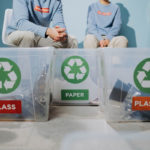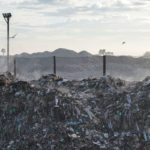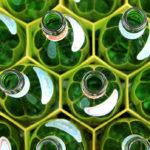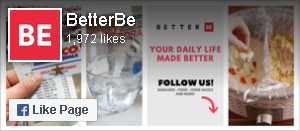What Household Packaging Can And Can’t Be Recycled

We’ve all tossed something into the rubbish bin not knowing for sure if it can be recycled or not. It’s not because we don’t want to help the environment, it’s just that recycling isn’t straightforward! It’s difficult to know what is and isn’t acceptable, especially when something as simple as leaving too much leftover food on the box could mean the entire load ends up in general waste.
So, let’s take the guesswork out of recycling by exploring these frequently asked questions and debunking some common myths…
Why is recycling important?
An excess of plastic, cardboard and glass waste can have a devastating effect on the environment and the planet. Why is this? Because waste dumped on landfill sites or burned at industrial incinerators can increase air and ground pollution with potentially toxic and life-threatening fumes and micro-particles.

On the other hand, recycling has clear benefits:
- It limits the amount of waste going to landfills.
- It creates additional jobs in recycling facilities.
- It reduces the number of raw materials required to create new products.
- It saves energy if compared to the creation, processing, and transport of new materials.
If we keep using non-recyclable or unsustainable materials, we’re only adding to the potential devastation of the planet. So, we must recycle where possible to reduce the production of harmful fumes and minimise the need for new unsustainable materials.
What can and can’t you recycle?
1. Polystyrene & Styrofoam
Like many plastics, polystyrene is slow to biodegrade and is not really a planet-friendly material. It’s often used to make food and drinks containers or used in the form of pellets to protect items during shipping.
If you’ve ever ordered fast food or a takeaway meal, you’ll likely be familiar with the polystyrene or styrofoam container. It can be recycled, but usually only at specialist facilities. So, if you can, use your own container or ask for a cardboard one instead.
2. Aluminium & Tinfoil
These are household staples that can go in your dedicated recycling bin. However, you should try to clean any food residue off to prevent contamination and avoid it being rejected by the recycling centre.
You can recycle most aluminium items, including drinks cans, screw-top lids and BBQ trays. Be careful though—some wrappers appear to be foil but are plastic. Do the scrunch test to be sure: if you scrunch the wrapper in your hand and it springs back, it’s not recyclable.
3. Paper & Cardboard
Paper is a widely recycled material. However, there are lots of paper products that you might think can be recycled but can’t be. This happens mostly with coated materials like wrapping paper, wallpaper or wax wraps.
Paper types you can recycle:
- Brown parcel paper (uncoated)
- Catalogues
- Printer paper
- Phone directories
- Envelopes (no plastic window)
- Magazines & newspapers
- Cardboard
Again, try to avoid food contamination and don’t bother with things like greaseproof paper, baking sheets, used paper towels or sweet wrappers.
4. Glass
Most glass jars and bottles can be recycled. The best way is to rinse out any food or liquid waste from objects and put the lid back on if it has one.

Not all glass items can go in your household recycling, though. Products such as light bulbs or glass cookware are tempered differently and melt at higher temperatures, so they must go to a separate facility via a dedicated recycling box or bin.
5. Bubble wrap
It makes for a fun 30 minutes of popping, but bubble wrap cannot usually be recycled. The good news is that there are lots of grocery stores that offer recycling bins where you can safely dispose of plastic bags and bubble wrap.
And, if you don’t want to throw it away, it has a multitude of handy home uses:
- To package items in the mail.
- Wrapping up & protecting delicate objects when moving house.
- As insulation for your shed or greenhouse.
- To protect your plants from frost damage.
- To create a DIY camping or yoga mat.
- For lining your car windows to prevent frost.
6. Sanitary Products & Nappies
Sanitary products such as tampons and pads or nappies are technically biohazards, so they cannot be recycled. Nappies or sanitary products left in the recycling bin can actually be potentially dangerous as not only are they unsuitable for recycling, but they can pose a health risk to those that have to handle them.
These products should always go in your general waste bin. As a rule, any products that contain human waste or biological materials should be regarded as non-recyclables.
Should you rinse before you recycle?
If the item is waterproof, then the answer is yes, you should. It varies between recycling centres, but a single dirty item can contaminate an entire load of recycling, which means your whole bin might be incinerated instead.
If you want to ensure your recycling load is safe, avoid putting in any containers that might contain food waste. If you’re recycling things such as drink bottles or jars, simply give them a rinse, and they’ll be good to go.
Global Recycling Day 2022
This year, Global Recycling Day falls on the 18th of March 2022. It’s a yearly event that encourages people around the world to recycle more often, and it seeks to inform the general public as to why recycling is so important for the environment.
Check out the Global Recycling Day website to discover more handy resources and information. You can even take part in their yearly recycling competition.
With a little extra effort and diligence, we can all ensure our recycling efforts are effective and beneficial for the environment—and the planet.
You may also like






